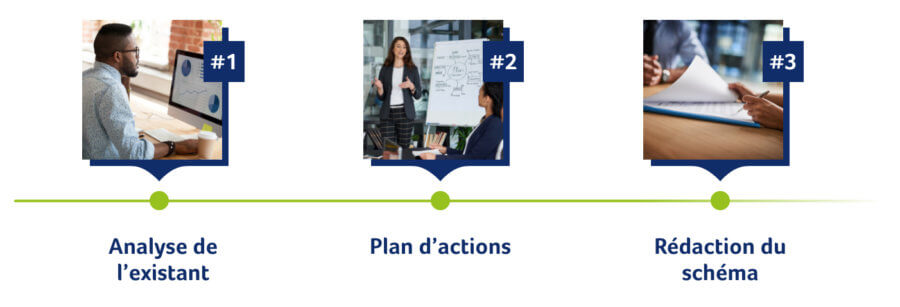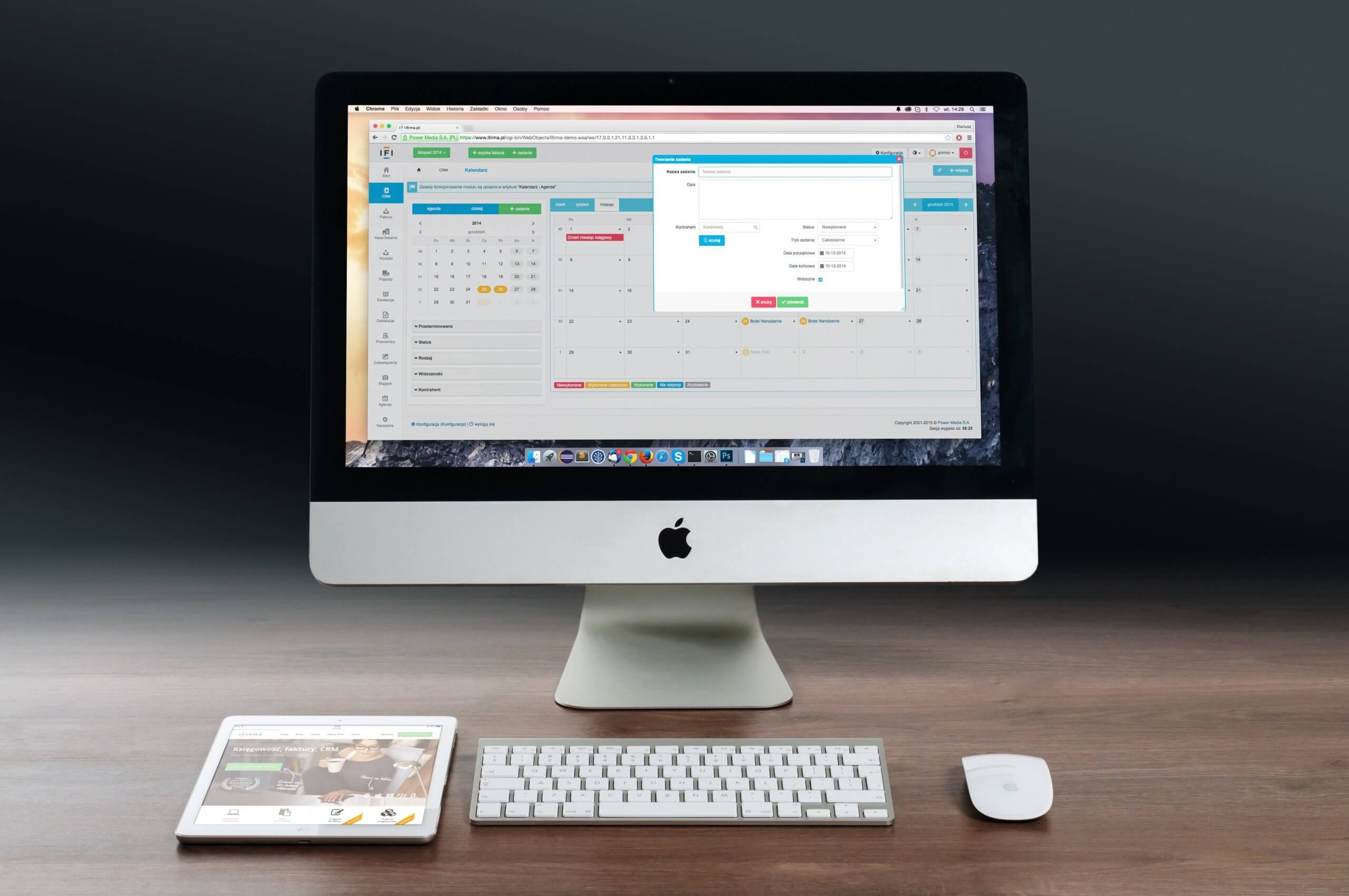Digiwin and its accessibility experts have been assisting customers with their RGAA compliance projects for many years. The multi-year plan, a real tool for managing the accessibility of an organization’s sites, is not to be overlooked. In this article, find out more about the multi-year plan, how it is organized and implemented, and how we can guide you in this project.
In a separate article, find out how to carry out an accessibility audit – RGAA 4.
The multi-year accessibility plan
Definition
Article 47 of French law no. 2005-102 of February 11, 2005, on equal rights and opportunities, participation and citizenship, requires all online public communication services to report on the accessibility management of their digital applications and platforms, both internally and externally. In application of paragraph III of the aforementioned article 47, the multi-year plan must present the policy of the entity concerned in terms of taking into account the digital accessibility of its sites and digital tools.
To this end, the multi-year plan and the action plan for the current year must be available for consultation on all online services. Links to this document must be included in each declaration of accessibility of online communication services.
Building such a document requires the collaboration of a whole range of stakeholders, from accessibility experts to content producers, including IT, purchasing and communications departments.
In such a document, the role of the RGAA experts is to provide a complete methodology to guide the various stakeholders in their approach.
The multi-year plan in a few dates and milestones
Under French law, the public and private web (with sales in excess of 250 million) must be made accessible. The terms and milestones are defined in article 47 of the February 2005 law:
“On-line public communication services provided by the State, local authorities and their public establishments must be accessible to disabled people.
- Decree no. 2009-546 of May 14, 2009 sets out the framework for the accessibility guidelines for online public communication services.
- Thedecree of October 21, 2009 implements theRGAA accessibility guidelines for online public communication services.
- The order of September 27, 2019 approves version 4.0 of the RGAA.
From then on, the departments concerned must apply the recommendations relating to digital accessibility, based on the RGAA reference framework (currently in version 4.0) published by Dinum. In addition, they must complete the necessary compliance work within three years, and train the staff involved in these projects. All these tasks require organization and expertise in accessibility issues.
Consequently, the public web must be accessible from:
- May 2011 for all departments
- May 2012 for local authorities
Now, in October 2016, a directive has come to impose new obligations, this time from Europe.
The European Directive of October 26, 2016
This directive, standard EN 301 549, transposed into French law on September 7, 2018, brings new elements to the normative and legislative framework.
Target groups
- The public sector.
- Legal entities governed by public law (except audiovisual media).
- Legal entities under private law with public service delegations.
- Private, non-profit legal entities with a mission of general interest.
- Large private-sector companies with sales in excess of €250 million.
What are the legal requirements?
The aim of this directive is to enableaccess for all to digital information in all its forms (internet, intranet, extranet, mobile applications, software packages and street furniture).
This involves an obligation to provide information on the accessibility measures undertaken and to publicize compliance via :
- One accessibility declaration per site;
- A 3-year multi-year plan including an annual action plan;
- A visible notice on the home page of each site specifying its level of compliance with accessibility rules.
What is the legal risk?
Offenders risk a fine of up to 20,000 euros per year per site if they fail to publish the level of integration.
Digital accessibility legal deadlines
Transparency, the primary objective of the multi-year plan
The multi-year plan serves a dual purpose:
- Support the formalization of an accessibility plan for online and in-house resources;
- Build or optimize the internal digital accessibility maturity curve.
In order to achieve optimum accessibility to services, the aim is to organize and present the measures taken by the community to the public.
Organizing work on the multi-year plan
A multi-year plan is implemented in three stages:
Our RGAA experts at Digiwin can guide you through these three phases.
1. Analysis of existing situation
In order to carry out the inventory tasks involved in implementing accessibility for their information systems, the aim of the work with local authorities (or companies wishing to implement a multi-year plan) is :
- Organize teams,
- Provide them with theoretical and practical material.
This involves a series of questionnaires to be answered by the accessibility coordinators or working groups. The questions guide the organization of the work and serve as a common thread in the construction of the plan.
The responses to the questionnaires are then studied ina series of workshops. These thematic focus groups are used to determine the roles and responsibilities of each person involved in accessibility management (priorities, expenses, investments, communication, etc.).
The questionnaires will cover topics as varied as :
- The community’s accessibility policy,
- The scope of the digital ecosystem,
- Associated human resources,
- Training and awareness programs,
- Associated expenses and services,
- Control and validation processes.
2. Action plan
After analyzing all the feedback from the interviews, Digiwin’s experts propose an organizational methodology for producing the multi-year digital accessibility plan.
In particular, the action plan details :
- The list of services affected by the implementation of the plan,
- The players involved,
- The planned governance and
- Estimated costs, expenses and resources associated with such an initiative.
3. Drafting the diagram
Made up of around ten pages, the final plan is a document co-written by the reference teams and the expert accessibility consultant(s) in charge of the project.
The resulting document presents the policy for implementing digital accessibility in an “official” and transparent way , and must be made available to the public on all online platforms.
The multi-year plan, beneficial at all levels
Drawing up a multi-year plan is a major undertaking, taking varying amounts of time depending on the scope of the information system. It can take several months to complete, and involve many people within the local authority or company, in particular the accessibility consultant(s). However, it offers a host of benefits that go far beyond simple accessibility management.
Ultimately, it provides the community with a controlled view of its digital ecosystem, in human, financial and technical terms, and enables it to project itself more serenely into the future.
The beneficiaries of this work are many: users and organizers alike, with the public or customer at the end of the line, whose use of the services is strengthened.





